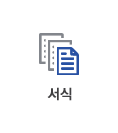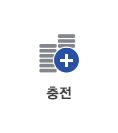본문내용
ented to person, place, time(A&O x3), confused, etc
normal
Speech: clear, appropriate/inappropriate
Pupils: PERRLA
normal
Sensory deficits for
vision(+)/hearing(-)/taste(-)/smell(-)
->뇌하수체 선종으로 시신경이 압박받아 발생
24) MUSCULOSKELETAL STATUS
Bone, joints, muscles (fractures, contractures, spinal curvatures, etc):
normal
Extrmity (temperature, edema, sensation)
pitting edema(+)-전신적
temperature, sensation normal
Motor: ROM x 4 extremities
normal
Ted hose/plexi pulses/compression devices: type (-)
casts, splint, collar, brace (-)
25) CARDIOVASCULAR SYSTEM
Pulses(radial, pedal) (to touch or with Doppler):
92
Capillary refill(<3s)
□ Yes □ No
Neck vein(distention)
(-)
Sounds: S1, S2, regular, irregular:
Apical rate: 92
Any chest pain:
(-)
26) RESPIRATIRY SYSTEM
rate:
20/min
Depth,
rhythm:
normal
Use of accessory muscles:
(-)
Cyanosis:
(-)
Sputum color, amount:
(-)
Cough: productive, nonproductive
(-)
Breath sounds: clear, rales, wheezes
Use of oxygen: nasal cannula, mask, trachollar : (-)
Flow rate of oxygen:
Oxygen humidification:
□ Yes □ No
(가습기 적용 중)
Pulse oximeter:(-)
% oxygen saturation
Smoking
□ Yes □ No
27) GASTROINTESTINAL SYSTEM
Abdominal pain, tenderness, guarding: distention, soft, firm:
normal
Bowel sounds x4 quadrants:
각각 16회, 8회, 5회, 5회(분당)
NG tube: describe drainage
(-)
Ostomy: describe stoma site and stools:
(-)
Other:
28)SKIN AND WOUNDS
color, turgor:
normal
rash, bruises:
(-)
Describe wounds
코 안쪽이라 자세히 살펴보지 못했다. 수술한지 시간이 꽤 지나서 콧구멍 주위의 상처도 모두 아물었다.
Edges approximated:
clear
Type of wound drains:
(-)
characteristics of drainage:
(-)
Dressings(clean, dry, intact):
(-)
Sutures, staples, steri-strips, other:
(-)
Risk for pressure ulcer assessment rating :
욕창점수 22점
(위험군에 속하지 않음)
other:
29)EYES,EARS,NOSE,THROAT(EENT)
Eyes: redness, drainage, edema, ptosis
(-)
Ears: drainage
(-)
Nose: redness, drainage, edema
(-)
Throat:sore
(-)
Psychosocial and Cultural Assessment
30)Religious preference(face sheet)
무교
31)Marital status
기혼
32)Health care benefits and insurance(face sheet)
공단
33)Occupation(face sheet)
없음
34)Emotional state(nurse\'s notes)
조금 불안정
-눈이 예전처럼 보이지 않아 다시 시력이 돌아오지 않는지에 대해 불안해 하심
Book Review (use extra paper if necessary,) limit 3 pages
Pathophysiology:
전체 뇌종양의 10%를 차지하며 대부분이 선종(adenoma)이다.
크기에 따라 미세선종(직경 1cm미만), 거대선종(직경 1cm이상)
호르몬 분비 여부에 따라 기능성(전체 뇌하수체종양의 3/4)과 비기능성(1/4)로 분류
대부분의 뇌하수체 종양은 양성이고 천천히 자란다.
Manifestations
(1)거대선종인 경우 압박증상으로 두통, 시야결손(superior temporal quadranopsia, bitemporal hemianopsia), 동안신경 침범, 뇌하수체경 압박, 시상하부 증후군, 뇌압상승 등이 나타날 수 있다.
(2)말단거대증, 고프로락틴혈증, 쿠싱병 등의 기능항진증이 나타날 수 있다.
(3)거대선종인 경우 정상 뇌하수체 조직 파괴 또는 뇌하수체경 압박에 의해 프로락틴 농도는 다양하며 뇌하수체저하증이 나타날 수 있다.
(4)심한 터키안 상부 확장을 동만하는 거대 선종에 의한 시상하부 손상으로 간혹 요붕증을 동반할 수 있다.
(5)비기능성의 미세선종인 경우 전혀 증상이 없으므로 다른 이유로 촬영한 뇌 MRI에서 우연히 발견된다.
Diagnostic Test
(1)호르몬검사
기능성 종양인 경우 혈증 GH(성장호르몬)증가, 고프로락틴혈증 등을 관찰할 수 있으며 비기능성의 거대선종인 경우 뇌하수체저하증(고프로락틴혈증)을 보인다.
(2)병변을 확인하기 위한 MRI
(3)거대선종인 경우에는 시야검사를 시행하여 시야결손 확인
(4)헙형골 수술로 얻은 면역죠직 화학염색 검사
Laboratory Test
(1)기초프로락틴
(2)인슐린양 성장인자1
(3)24시간 소변 코르티솔 혹은 덱사메타손 억제 테
normal
Speech: clear, appropriate/inappropriate
Pupils: PERRLA
normal
Sensory deficits for
vision(+)/hearing(-)/taste(-)/smell(-)
->뇌하수체 선종으로 시신경이 압박받아 발생
24) MUSCULOSKELETAL STATUS
Bone, joints, muscles (fractures, contractures, spinal curvatures, etc):
normal
Extrmity (temperature, edema, sensation)
pitting edema(+)-전신적
temperature, sensation normal
Motor: ROM x 4 extremities
normal
Ted hose/plexi pulses/compression devices: type (-)
casts, splint, collar, brace (-)
25) CARDIOVASCULAR SYSTEM
Pulses(radial, pedal) (to touch or with Doppler):
92
Capillary refill(<3s)
□ Yes □ No
Neck vein(distention)
(-)
Sounds: S1, S2, regular, irregular:
Apical rate: 92
Any chest pain:
(-)
26) RESPIRATIRY SYSTEM
rate:
20/min
Depth,
rhythm:
normal
Use of accessory muscles:
(-)
Cyanosis:
(-)
Sputum color, amount:
(-)
Cough: productive, nonproductive
(-)
Breath sounds: clear, rales, wheezes
Use of oxygen: nasal cannula, mask, trachollar : (-)
Flow rate of oxygen:
Oxygen humidification:
□ Yes □ No
(가습기 적용 중)
Pulse oximeter:(-)
% oxygen saturation
Smoking
□ Yes □ No
27) GASTROINTESTINAL SYSTEM
Abdominal pain, tenderness, guarding: distention, soft, firm:
normal
Bowel sounds x4 quadrants:
각각 16회, 8회, 5회, 5회(분당)
NG tube: describe drainage
(-)
Ostomy: describe stoma site and stools:
(-)
Other:
28)SKIN AND WOUNDS
color, turgor:
normal
rash, bruises:
(-)
Describe wounds
코 안쪽이라 자세히 살펴보지 못했다. 수술한지 시간이 꽤 지나서 콧구멍 주위의 상처도 모두 아물었다.
Edges approximated:
clear
Type of wound drains:
(-)
characteristics of drainage:
(-)
Dressings(clean, dry, intact):
(-)
Sutures, staples, steri-strips, other:
(-)
Risk for pressure ulcer assessment rating :
욕창점수 22점
(위험군에 속하지 않음)
other:
29)EYES,EARS,NOSE,THROAT(EENT)
Eyes: redness, drainage, edema, ptosis
(-)
Ears: drainage
(-)
Nose: redness, drainage, edema
(-)
Throat:sore
(-)
Psychosocial and Cultural Assessment
30)Religious preference(face sheet)
무교
31)Marital status
기혼
32)Health care benefits and insurance(face sheet)
공단
33)Occupation(face sheet)
없음
34)Emotional state(nurse\'s notes)
조금 불안정
-눈이 예전처럼 보이지 않아 다시 시력이 돌아오지 않는지에 대해 불안해 하심
Book Review (use extra paper if necessary,) limit 3 pages
Pathophysiology:
전체 뇌종양의 10%를 차지하며 대부분이 선종(adenoma)이다.
크기에 따라 미세선종(직경 1cm미만), 거대선종(직경 1cm이상)
호르몬 분비 여부에 따라 기능성(전체 뇌하수체종양의 3/4)과 비기능성(1/4)로 분류
대부분의 뇌하수체 종양은 양성이고 천천히 자란다.
Manifestations
(1)거대선종인 경우 압박증상으로 두통, 시야결손(superior temporal quadranopsia, bitemporal hemianopsia), 동안신경 침범, 뇌하수체경 압박, 시상하부 증후군, 뇌압상승 등이 나타날 수 있다.
(2)말단거대증, 고프로락틴혈증, 쿠싱병 등의 기능항진증이 나타날 수 있다.
(3)거대선종인 경우 정상 뇌하수체 조직 파괴 또는 뇌하수체경 압박에 의해 프로락틴 농도는 다양하며 뇌하수체저하증이 나타날 수 있다.
(4)심한 터키안 상부 확장을 동만하는 거대 선종에 의한 시상하부 손상으로 간혹 요붕증을 동반할 수 있다.
(5)비기능성의 미세선종인 경우 전혀 증상이 없으므로 다른 이유로 촬영한 뇌 MRI에서 우연히 발견된다.
Diagnostic Test
(1)호르몬검사
기능성 종양인 경우 혈증 GH(성장호르몬)증가, 고프로락틴혈증 등을 관찰할 수 있으며 비기능성의 거대선종인 경우 뇌하수체저하증(고프로락틴혈증)을 보인다.
(2)병변을 확인하기 위한 MRI
(3)거대선종인 경우에는 시야검사를 시행하여 시야결손 확인
(4)헙형골 수술로 얻은 면역죠직 화학염색 검사
Laboratory Test
(1)기초프로락틴
(2)인슐린양 성장인자1
(3)24시간 소변 코르티솔 혹은 덱사메타손 억제 테
키워드
추천자료
 내과 호흡기계(COPD, 결핵, 폐렴) 케이스 스터디(case study)
내과 호흡기계(COPD, 결핵, 폐렴) 케이스 스터디(case study) [간호학과] 신경정신과 병동 환자 정신분열병 (schizophrenia) 케이스 스터디 (case study)
[간호학과] 신경정신과 병동 환자 정신분열병 (schizophrenia) 케이스 스터디 (case study) [정신간호학] 공황장애 (panic disorder, somatization disorder) 케이스 스터디 (case study)
[정신간호학] 공황장애 (panic disorder, somatization disorder) 케이스 스터디 (case study) [간호학] 뇌경색 (Cerebral infarction) 케이스 스터디 (case study) 사례연구
[간호학] 뇌경색 (Cerebral infarction) 케이스 스터디 (case study) 사례연구 [성인간호학실습] stomach cancer(위암) case study (케이스 스터디)
[성인간호학실습] stomach cancer(위암) case study (케이스 스터디) 간호학과 심근경색 (Myocardial Infarction : MI) 케이스 스터디 case study.ppt
간호학과 심근경색 (Myocardial Infarction : MI) 케이스 스터디 case study.ppt [성인간호학][간경화][Liver Cirrhosis] 케이스 스터디(Case Study), 문헌고찰
[성인간호학][간경화][Liver Cirrhosis] 케이스 스터디(Case Study), 문헌고찰 [성인간호학][소화성궤양][Peptic ulcer] 케이스 스터디(Case Study), 문헌고찰
[성인간호학][소화성궤양][Peptic ulcer] 케이스 스터디(Case Study), 문헌고찰 [성인간호학] DM(Diabetes Mellitus) 케이스 스터디case study (간호사정+간호진단 ,계획, 수...
[성인간호학] DM(Diabetes Mellitus) 케이스 스터디case study (간호사정+간호진단 ,계획, 수... 정신간호학 MR(정신지체), 조현병 케이스 스터디 (Schizophrenia Case Study) - 이름 : 장O진...
정신간호학 MR(정신지체), 조현병 케이스 스터디 (Schizophrenia Case Study) - 이름 : 장O진... [아동 실습] 세기관지염 (Bronchiolitis) 아동 실습 케이스 스터디 case study
[아동 실습] 세기관지염 (Bronchiolitis) 아동 실습 케이스 스터디 case study  충수절제술(충수돌기절제술/appendectomy)과 관련된 성인간호학 케이스 스터디(case study)입...
충수절제술(충수돌기절제술/appendectomy)과 관련된 성인간호학 케이스 스터디(case study)입... 발작 및 간질(seizure & epilepsy) A + 케이스 스터디, case study, 사례연구
발작 및 간질(seizure & epilepsy) A + 케이스 스터디, case study, 사례연구 정신과) 기분장애(Mood disorder) = 양극성장애(Bipolar disorder) 케이스 스터디 (CASE STUD...
정신과) 기분장애(Mood disorder) = 양극성장애(Bipolar disorder) 케이스 스터디 (CASE STUD...































소개글